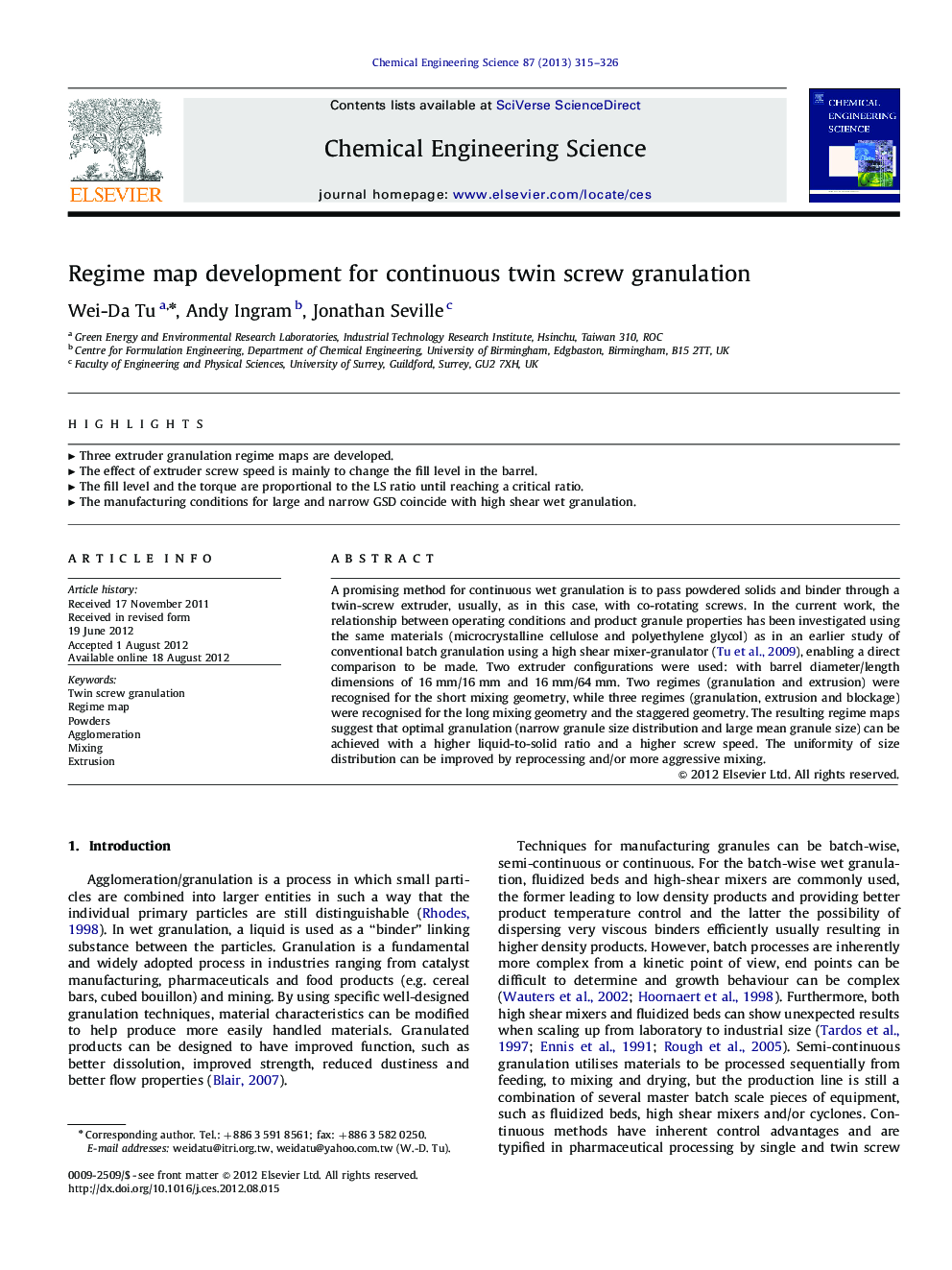| Article ID | Journal | Published Year | Pages | File Type |
|---|---|---|---|---|
| 155429 | Chemical Engineering Science | 2013 | 12 Pages |
A promising method for continuous wet granulation is to pass powdered solids and binder through a twin-screw extruder, usually, as in this case, with co-rotating screws. In the current work, the relationship between operating conditions and product granule properties has been investigated using the same materials (microcrystalline cellulose and polyethylene glycol) as in an earlier study of conventional batch granulation using a high shear mixer-granulator (Tu et al., 2009), enabling a direct comparison to be made. Two extruder configurations were used: with barrel diameter/length dimensions of 16 mm/16 mm and 16 mm/64 mm. Two regimes (granulation and extrusion) were recognised for the short mixing geometry, while three regimes (granulation, extrusion and blockage) were recognised for the long mixing geometry and the staggered geometry. The resulting regime maps suggest that optimal granulation (narrow granule size distribution and large mean granule size) can be achieved with a higher liquid-to-solid ratio and a higher screw speed. The uniformity of size distribution can be improved by reprocessing and/or more aggressive mixing.
► Three extruder granulation regime maps are developed. ► The effect of extruder screw speed is mainly to change the fill level in the barrel. ► The fill level and the torque are proportional to the LS ratio until reaching a critical ratio. ► The manufacturing conditions for large and narrow GSD coincide with high shear wet granulation.
